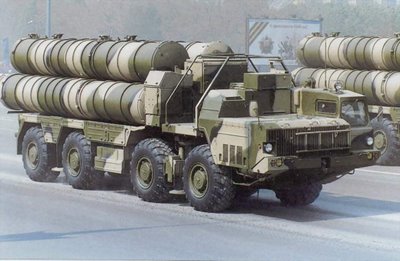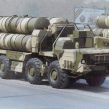
Russia Deploys S-300 Air Defense Systems in Abkhazia
Publication: Eurasia Daily Monitor Volume: 7 Issue: 155
By:

Russian state news agencies announced today (August 11) that Russia’s armed forces have deployed the advanced S-300 air defense missile systems in Abkhazia, a territory that Moscow recognizes as “independent.” In a parallel move, air defenses of other types have been deployed in the Russian-recognized South Ossetia.
According to Russia’s air force Commander-in-Chief, Colonel-General Alexander Zelin, the purpose of these air defenses is to avert “border” violations in the air and destroy any aircraft penetrating those territories’ “air space.” The Russian military is known to have been building a base for air defense systems at Nalamus, a location on the Satanjo Mountain in the Gali district in southern Abkhazia, following the 2008 military occupation of the area.
Georgia has no air force and no intention to acquire one (nor does it have conventional defense capabilities in the face of Russian forces massed in Abkhazia and South Ossetia). Russian S-300’s in Abkhazia cannot conceivably aim at Georgian air targets.
The Russian deployment’s most likely goal is to create a capability for interdicting Georgian, or indeed US and NATO, flights over the adjacent Black Sea area, Georgia’s interior, and the South Caucasus air corridor. Russian interdiction capability can deter Georgia, the United States and its allies from using those flight paths in certain contingencies; or can compel them to clear their flight plans with Russia in certain contingencies. Such contingencies may include another Russian invasion of Georgia complete with an air blockade; or US air operations in the South Caucasus, in the context of possible hostilities with Iran; or demonstrating Russian air interdiction capability along the allied supply corridor to Central Asia and Afghanistan.
Russia’s S-300 deployment is the latest in a series of unlawful moves to restrict Georgian and international flight paths in the region. Such moves followed one after the other, without an international response, and revealing US and allied self-inflicted weakness in this region. In the spring of 2008 (while pouring additional ground troops into Abkhazia), Russia banned any flights not authorized by itself in Abkhazia’s “air space,” including the adjacent Black Sea area. In early summer 2008, the Russian air defense shot down several Israeli-made Georgian unmanned aerial vehicles (UAV’s), so as to blind Georgia and its allies to the Russian troop movements in Abkhazia. Those troops were already poised to attack before August 2008.
The next stage in this sequence is especially instructive, although it remains under analyzed. In 2008, Russia successfully pressured Israel to cease delivering UAV’s (and, afterward, any military equipment) to Georgia. Despite its special relationship with Georgia, Israel complied when Moscow threatened to deliver S-300 air defense systems to Iran and heavy rockets to Hezbollah. At the same time, Russia proceeded to invade Georgia and occupy its territories. The Israeli angle of these events was well covered by Israeli media at the time; and became a subject of retrospection with the Georgian ambassador in that country, on the war’s second anniversary (Haaretz, August 3).
Thus, Moscow compelled one close US ally, Israel, to desist from aiding (with non-lethal defensive means) another close US ally, Georgia. Washington seemed unable to protect one ally from Russian blackmail and the other ally from Russian invasion. In combination, those developments could be seen as harbingers of unraveling in the US-led alliance system. NATO seemed uninterested and Washington took no public notice of the implications, at the time or since then. Ultimately, Washington itself withholds from Georgia the basic means for defense while Russia is augmenting its forces in the region.
The S-300 deployment in Abkhazia follows in the wake of announcements about prolongation of Russia’s military presence in Armenia for decades to come. Under a Russian-drafted protocol, expected to be signed by Presidents Dmitry Medvedev and Serge Sarksyan in Yerevan shortly, Armenia will extend Russia’s basing rights in Armenia for decades to come. The existing agreement, signed in 1995, entitles Russia to use the Gyumri base in Armenia (on the Turkish border) for 25 years, (until 2020). The additional protocol, as confirmed by Armenia’s National Security Council Secretary, Artur Bagdasarian, would extend that period past 2020 for another 24 years, or a total of 49 years until 2044, “with the possibility of subsequent extensions.” Moreover, the protocol would broaden the scope of Russian troops’ mission so as to include defense of Armenia (Interfax, July 30; PanArmenianNet, Armenian Public TV, August 4, 5).
In parallel, Moscow has orchestrated media stories about possible delivery of S-300 PMU2 air defense systems to Azerbaijan. These stories may seem designed to hint at a consolation prize to Azerbaijan. The deeper meaning, however, is that Russia is bidding to become an uncontested hegemon in the South Caucasus through hard power instruments, including manipulation of the Armenia-Azerbaijan conflict and seizure of Georgian territories.




